In computer architecture the software is defined as ? [ Students VFR ]
Question 65-1 : A collection of computer programs the physical components of a computer system the storage structure inside the central processing unit cpu the volatile memory ram random access memory
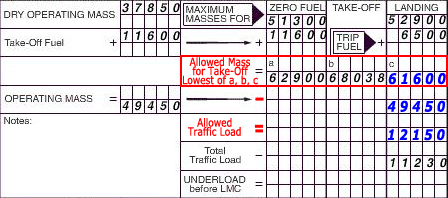 A collection of computer programs.
A collection of computer programs. In computer architecture the hardware is defined as ?
Question 65-2 : The physical components of a computer system the programmes which make up the operating system os the non volatile memory rom read only memory the non volatile memory ram random access memory
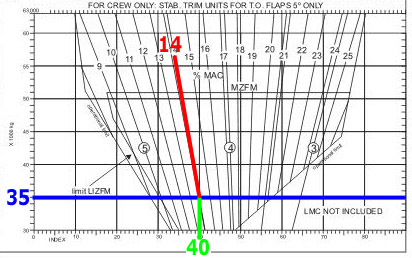 The physical components of a computer system.
The physical components of a computer system. In computer architecture a bus is a system that ?
Question 65-3 : Transfers data between computer components ensures sequencing and co ordination of operations performs basic arithmetic operations performs basic logic operations
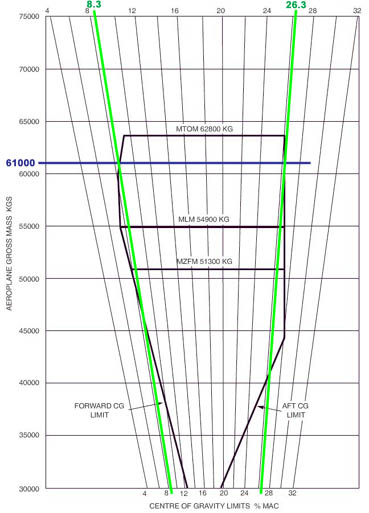 Transfers data between computer components.
Transfers data between computer components. In a basic computer the input and output devices are typically .1 a printer.2 ?
Question 65-4 : 1 2 3 4 2 3 4 2 4 1 2 3
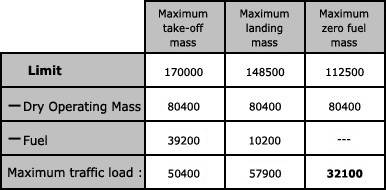 1, 2, 3, 4.
1, 2, 3, 4. A basic computer 'von neumann architecture' type uses ?
Question 65-5 : A processing unit and a single storage structure to hold both instructions and data a control unit and two storage structures one for instructions another for data a control unit which is a user/computer interface an arithmetic and logic unit alu to store the instructions
A machine for manipulating data according to a list of instructions is ?
Question 65-6 : A computer a control unit a central processing unit cpu an optical disk
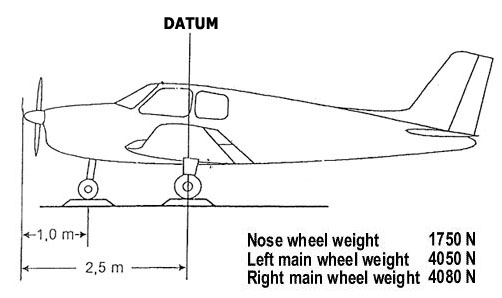 A computer.
A computer. In computer architecture the a system that transfers data between computer ?
Question 65-7 : A bus a control unit the volatile memory the arithmetic logic unit alu
On an aeroplane without central fuel tank the maximum zero fuel mass is related ?
Question 65-8 : The bending moment at the wing root variable equipment for the flight maximum structural take off mass wing loaded trip fuel
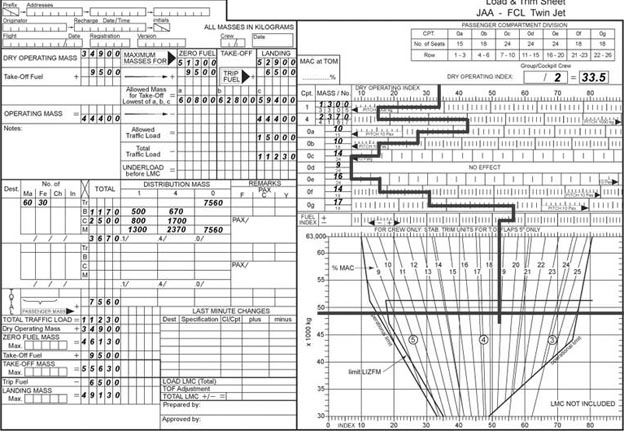 The bending moment at the wing root.
The bending moment at the wing root. Considering only structural limitations on long distance flights at the ?
Question 65-9 : The maximum take off mass the maximum zero fuel mass the maximum zero fuel mass plus the take off mass the maximum landing mass
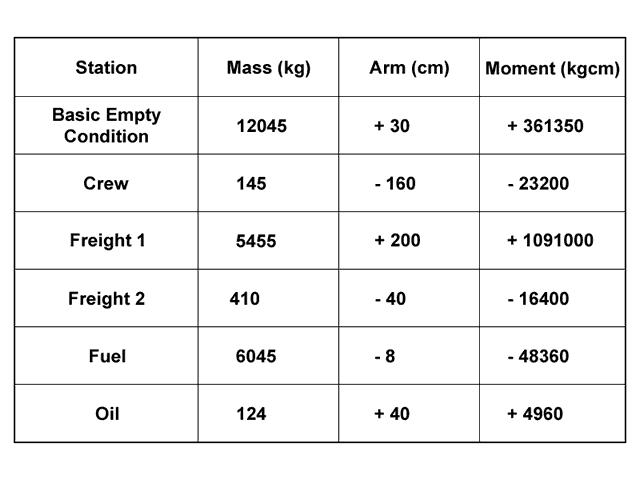 The maximum take-off mass.
The maximum take-off mass. Loads must be adequately secured in order to ?
Question 65-10 : Avoid unplanned cg movement and aircraft damage avoid any cg movement during flight prevent excessive 'g' loading during the landing flare allow steep turns
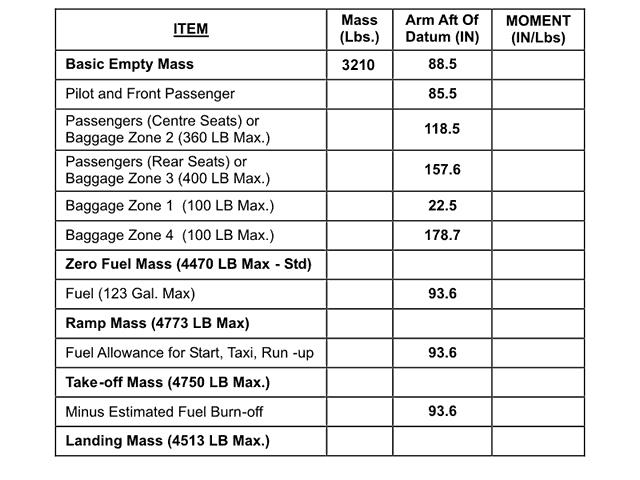 Avoid unplanned cg movement and aircraft damage.
Avoid unplanned cg movement and aircraft damage. What determines the longitudinal stability of an aeroplane ?
Question 65-11 : The location of the centre of gravity with respect to the neutral point the effectiveness of the horizontal stabilizer rudder and rudder trim tab the relationship of thrust and lift to weight and drag the dihedral angle of sweepback and the keel effect
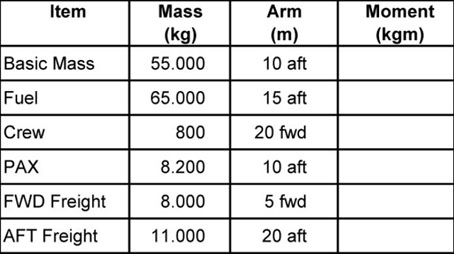 The location of the centre of gravity with respect to the neutral point.
The location of the centre of gravity with respect to the neutral point. The zero fuel mass of an aeroplane is always equal to ?
Question 65-12 : The take off mass minus the mass of fuel while setting take off thrust the take off mass minus the wing fuel mass the maximum take off mass minus the mass of fuel while setting take off thrust the take off mass minus the fuselage fuel mass
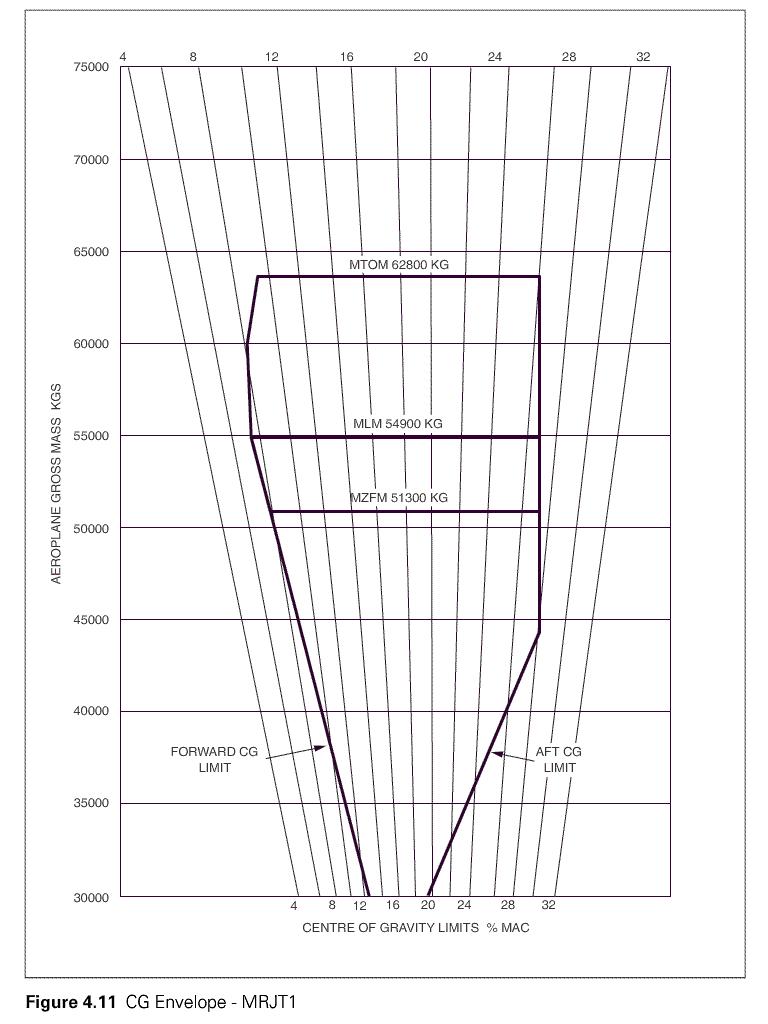 The take-off mass minus the mass of fuel while setting take-off thrust.
The take-off mass minus the mass of fuel while setting take-off thrust. If the centre of gravity is near the forward limit the aeroplane will ?
Question 65-13 : Require elevator trim which will result in an increase in fuel consumption benefit from reduced drag due to the decrease in angle of attack require less power for a given airspeed tend to over rotate during take off
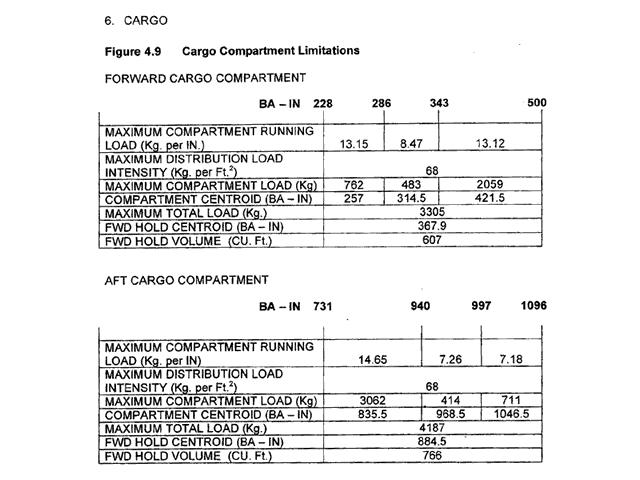 Require elevator trim which will result in an increase in fuel consumption.
Require elevator trim which will result in an increase in fuel consumption. The maximum taxi ramp mass is governed by ?
Question 65-14 : Structural considerations tyre speed and temperature limitations bearing strength of the taxiway pavement taxi distance to take off point
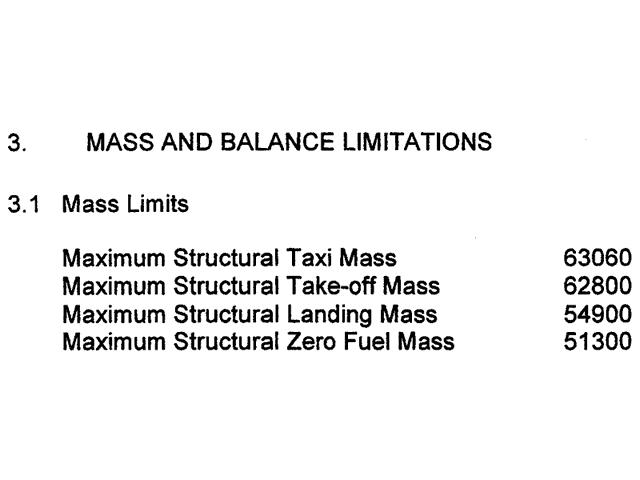 Structural considerations.
Structural considerations. When considering the effects of increased mass on an aeroplane which of the ?
Question 65-15 : Stalling speeds will be higher stalling speeds will be lower gradient of climb for a given power setting will be higher flight endurance will be increased
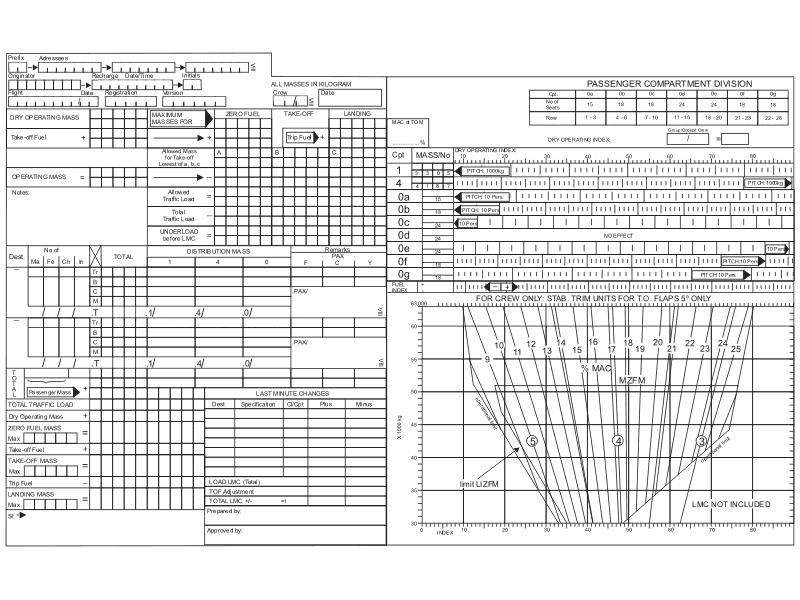 Stalling speeds will be higher.
Stalling speeds will be higher. If an aeroplane is at a higher mass than anticipated for a given airspeed the ?
Question 65-16 : Be greater drag will increase and endurance will decrease be decreased drag will decrease and endurance will increase remain constant drag will decrease and endurance will decrease remain constant drag will increase and endurance will increase
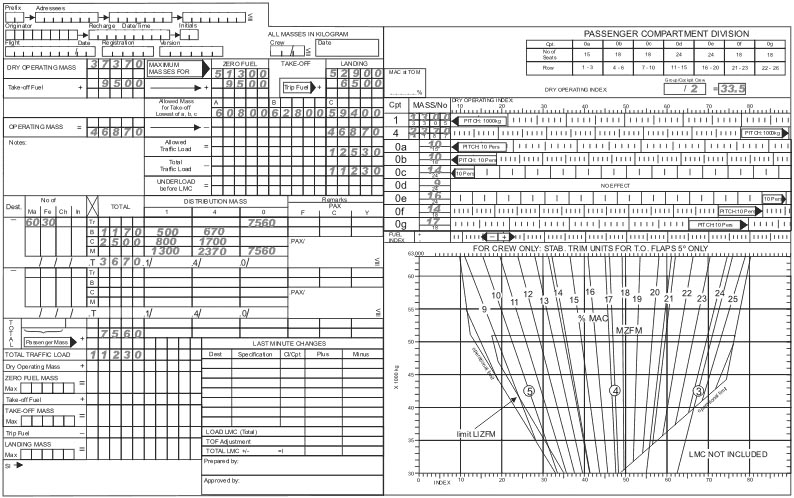 Be greater, drag will increase and endurance will decrease.
Be greater, drag will increase and endurance will decrease. Which of the following is most likely to affect the range of centre of gravity ?
Question 65-17 : Elevator and tailplane horizontal stabiliser effectiveness in all flight conditions location of the undercarriage the need to maintain a low value of stalling speed the need to minimise drag forces and so improve efficiency
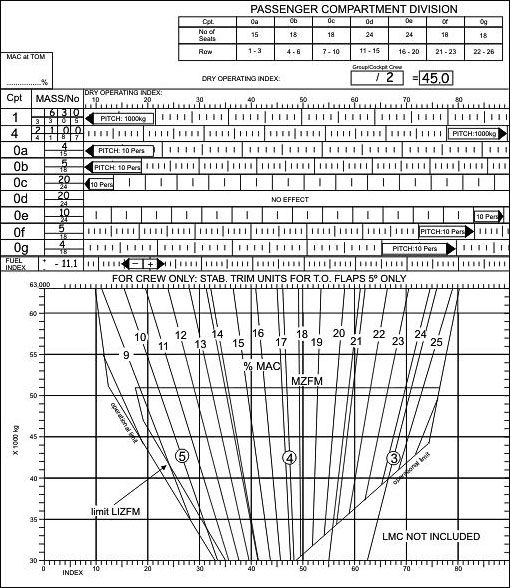 Elevator and tailplane (horizontal stabiliser) effectiveness in all flight conditions.
Elevator and tailplane (horizontal stabiliser) effectiveness in all flight conditions. During a violent avoidance manoeuvre a light twin aircraft certified to easa cs ?
Question 65-18 : A permanent deformation of the structure a elastic deformation whilst the load was applied but no permanent distortion no distortion permanent or temporary of the structure rupture of one or more structural components
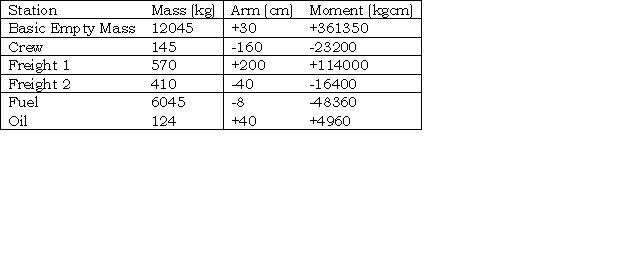 A permanent deformation of the structure.
A permanent deformation of the structure. For a given configuration the stall speed of an aeroplane will be highest when ?
Question 65-19 : To the maximum allowable mass with the most forward cg to a low total mass with the most forward cg to a low total mass with the most aft cg to the maximum allowable mass with the most aft cg
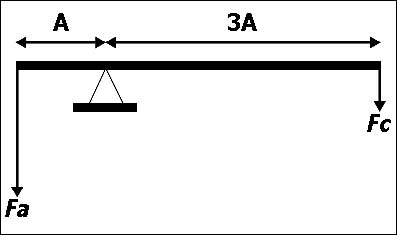 To the maximum allowable mass with the most forward cg.
To the maximum allowable mass with the most forward cg. Comparing a forward cg position with an aft one the forward cg position will ?
Question 65-20 : Decrease in range decrease in the landing speed decrease of the stalling speed tendency to yaw to the right on take off
In cruise flight an aft centre of gravity location will ?
Question 65-21 : Decrease longitudinal static stability increase longitudinal static stability have no effect on longitudinal static stability not change the manoeuvrability
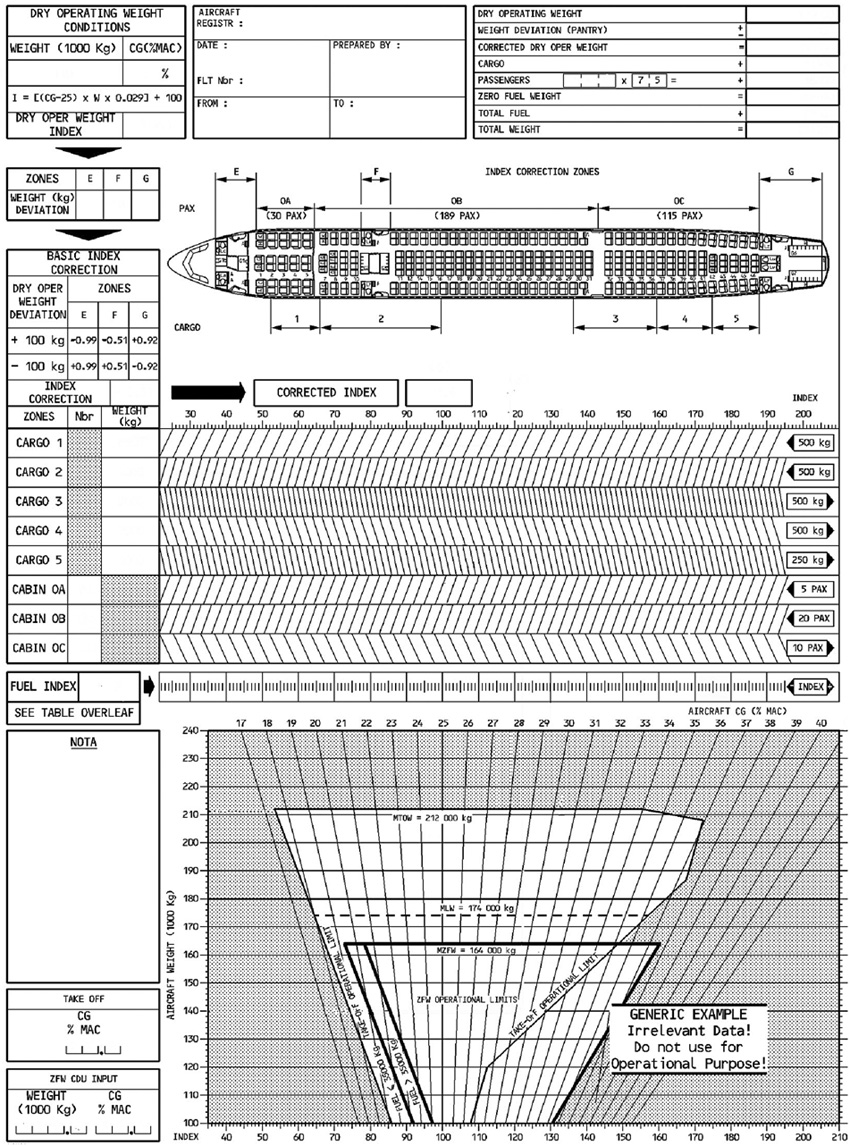 Decrease longitudinal static stability.
Decrease longitudinal static stability. Overloading has the following effects on performance ?
Question 65-22 : Increased take off and landing distance reduced rate of climb and increased fuel consumption increased take off and landing distance increased rate of climb and increased fuel consumption reduced take off and landing distance increased vne and increased fuel consumption reduced take off and landing distance increased vne and reduced rate of climb
Which of the following statements is correct ?
Question 65-23 : The maximum landing mass of an aeroplane is restricted by structural limitations performance limitations and the strength of the runway the maximum zero fuel mass ensures that the centre of gravity remains within limits after the uplift of fuel the maximum take off mass is equal to the maximum mass when leaving the ramp the basic empty mass is equal to the mass of the aeroplane excluding traffic load and useable fuel but including the crew
 The maximum landing mass of an aeroplane is restricted by structural limitations, performance limitations and the strength of the runway.
The maximum landing mass of an aeroplane is restricted by structural limitations, performance limitations and the strength of the runway. Which of the following statements is correct ?
Question 65-24 : A tail heavy aeroplane is less stable and stalls at a lower speed than a nose heavy aeroplane if the actual centre of gravity is located behind the aft limit of centre of gravity it is possible that the aeroplane will be unstable making it necessary to increase elevator forces if the actual centre of gravity is close to the forward limit of the centre of gravity the aeroplane may be unstable making it necessary to increase elevator forces the lowest stalling speed is obtained if the actual centre of gravity is located in the middle between the aft and forward limit of centre of gravity
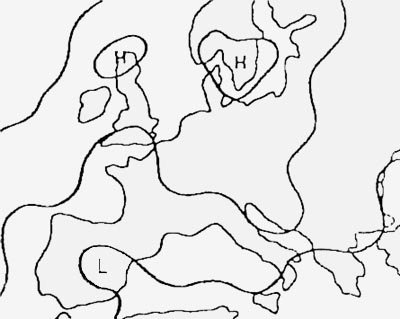 A tail heavy aeroplane is less stable and stalls at a lower speed than a nose heavy aeroplane.
A tail heavy aeroplane is less stable and stalls at a lower speed than a nose heavy aeroplane. An aeroplane which is scheduled to fly an oceanic sector is due to depart from ?
Question 65-25 : Altitude and temperature of the departure airfield maximum zero fuel mass maximum certificated take off mass en route obstacle clearance requirements
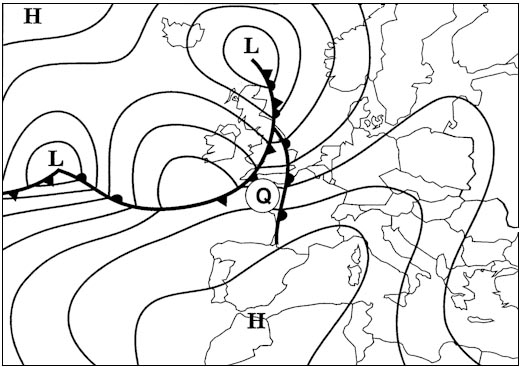 Altitude and temperature of the departure airfield.
Altitude and temperature of the departure airfield. At maximum certificated take off mass an aeroplane departs from an airfield ?
Question 65-26 : A high threshold speed and possible undercarriage or other structural failure a high threshold speed and a shorter stop distance a landing further along the runway than normal a landing short resultant from the increased angle of approach due to the very high aeroplane mass
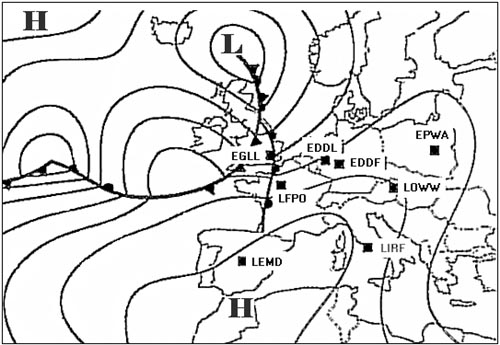 A high threshold speed and possible undercarriage or other structural failure.
A high threshold speed and possible undercarriage or other structural failure. The effect of the centre of gravity cg being close to the forward limit is ?
Question 65-27 : A reduced rate of climb capability an improved rate of climb capability reduced specific fuel consumption decreased induced drag
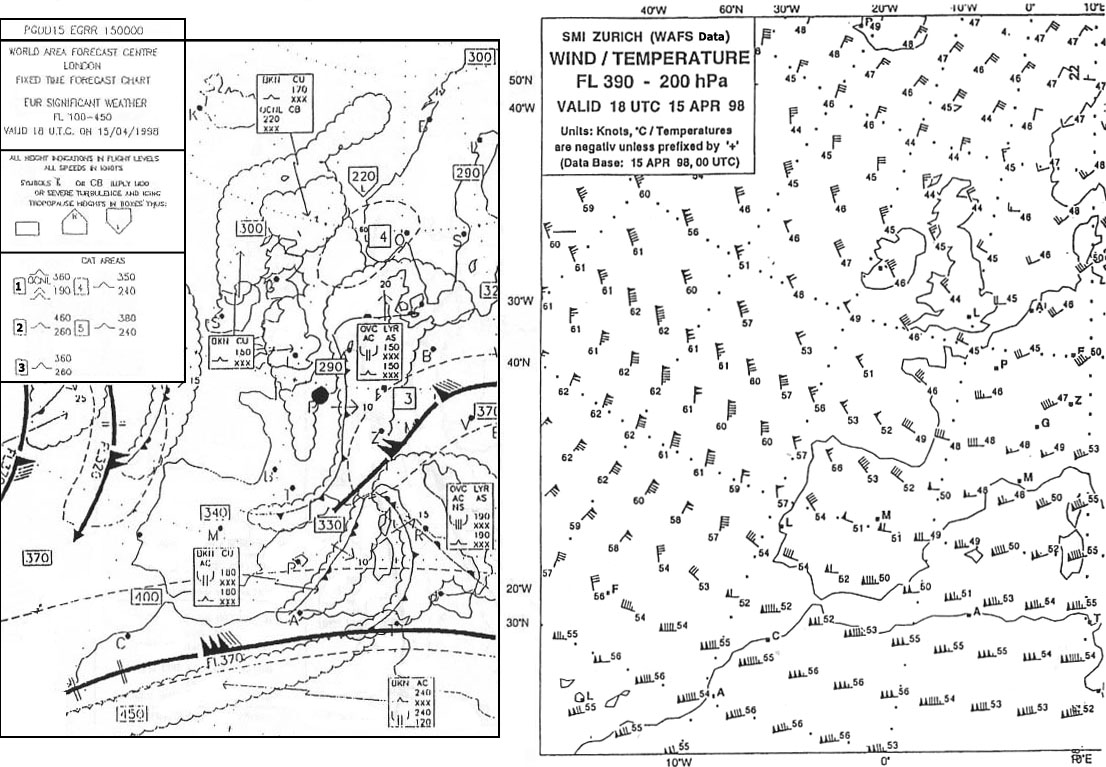 A reduced rate of climb capability.
A reduced rate of climb capability. The maximum zero fuel mass is a mass limitation for the ?
Question 65-28 : Strength of the wing root strength of the fuselage allowable load exerted upon the wing considering a margin for fuel tanking total load of the fuel imposed upon the wing
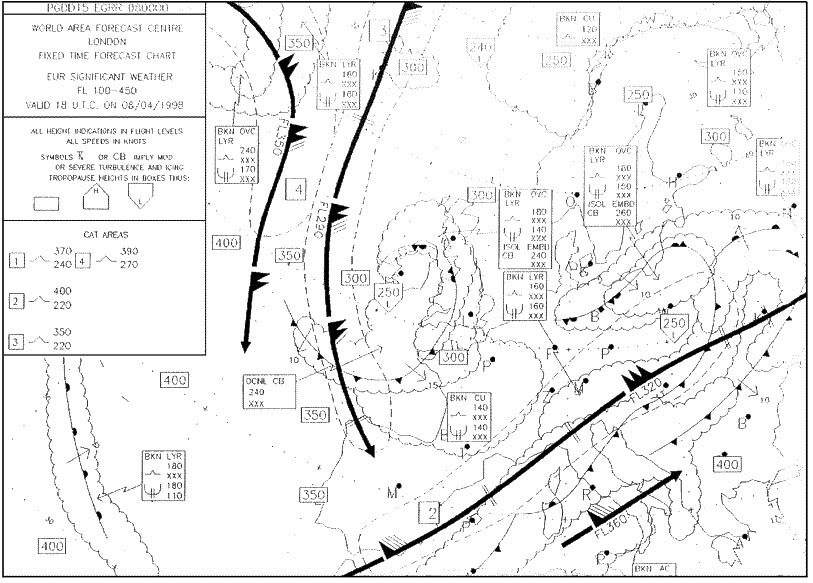 Strength of the wing root.
Strength of the wing root. In order to provide an adequate stall margin in level flight a speed of 1 3vs ?
Question 65-29 : Increased to 191 kt drag will increase and air distance per kg of fuel will decrease unaffected as vs always occurs at the same angle of attack increased to 191 kt drag will decrease and air distance per kg of fuel will increase increased to 202 kt but since the same angle of attack is used drag and range will remain the same
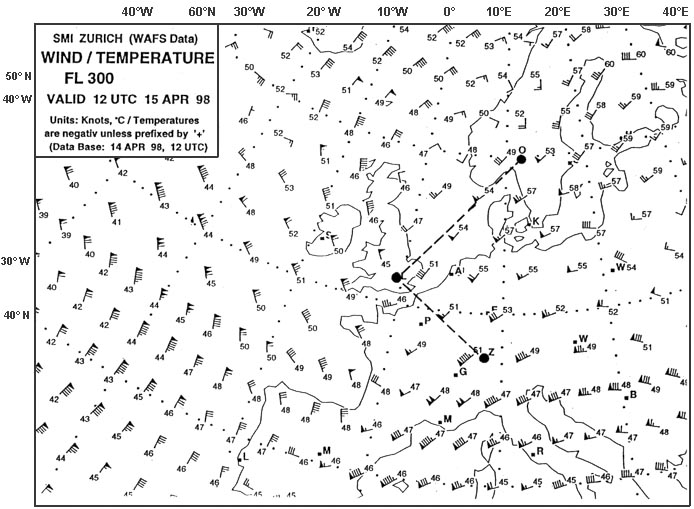 Increased to 191 kt, drag will increase and air distance per kg of fuel will decrease.
Increased to 191 kt, drag will increase and air distance per kg of fuel will decrease. What are the effects of a cg in front of the forward limit .range ?
Question 65-30 : And absolute ceiling decrease and absolute ceiling increase increases and absolute ceiling decreases decreases and absolute ceiling increases
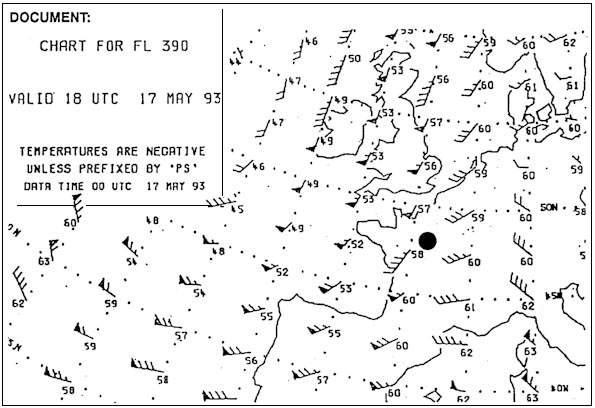 And absolute ceiling decrease.
And absolute ceiling decrease. The centre of gravity of an aircraft ?
Question 65-31 : Can be allowed to move between defined limits is in a fixed position and is unaffected by aircraft loading must be maintained in a fixed position by careful distribution of the load may only be moved if permitted by the regulating authority and endorsed in the aircraft's certificate of airworthiness
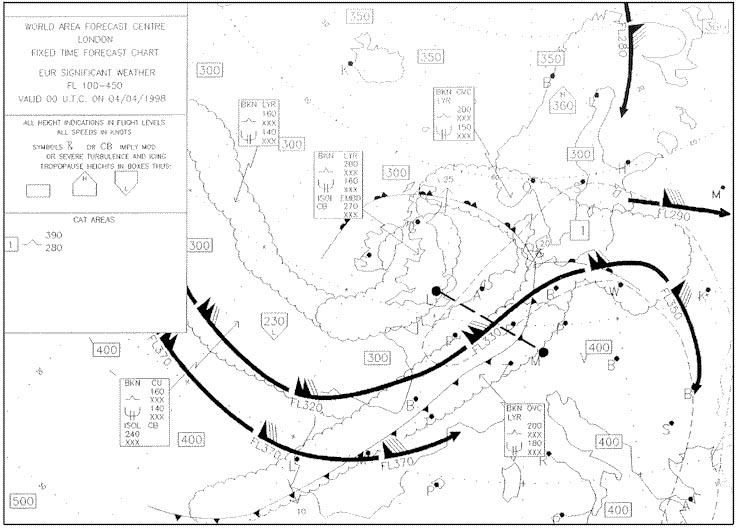 Can be allowed to move between defined limits.
Can be allowed to move between defined limits. Which statement regarding the relationship between traffic load and range is ?
Question 65-32 : The traffic load can be limited by the desired range the maximum traffic load is not limited by the reserve fuel quantity the maximum landing mass is basically equal to the maximum zero fuel mass the maximum zero fuel mass limits the maximum quantity of fuel
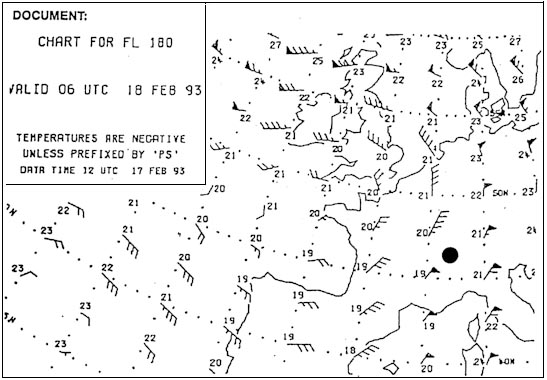 The traffic load can be limited by the desired range.
The traffic load can be limited by the desired range. The term 'useful load' as applied to an aircraft includes ?
Question 65-33 : Traffic load and usable fuel only pilot operating items passengers baggage cargo and usable fuel the revenue earning portion of load plus usable fuel the revenue earning portion of load only
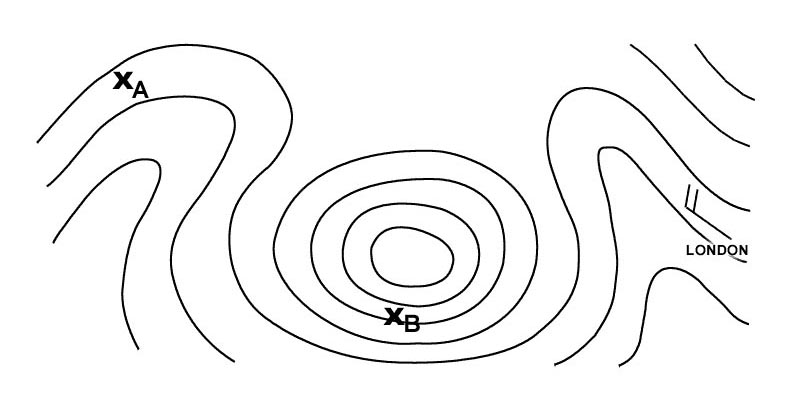 Traffic load and usable fuel only.
Traffic load and usable fuel only. If other factors are unchanged the fuel mileage nautical miles per kg is ?
Question 65-34 : Lower with a forward centre of gravity position independent from the centre of gravity position higher with a forward centre of gravity position lower with an aft centre of gravity position
 Lower with a forward centre of gravity position.
Lower with a forward centre of gravity position. The stalling speed of an aeroplane will be highest when it is loaded with a ?
Question 65-35 : High gross mass and forward centre of gravity low gross mass and forward centre of gravity high gross mass and aft centre of gravity low gross mass and aft centre of gravity
 High gross mass and forward centre of gravity.
High gross mass and forward centre of gravity. With the centre of gravity on the forward limit which of the following is to be ?
Question 65-36 : A decrease in range a decrease in the landing speed a decrease of the stalling speed a tendency to pitch up on take off
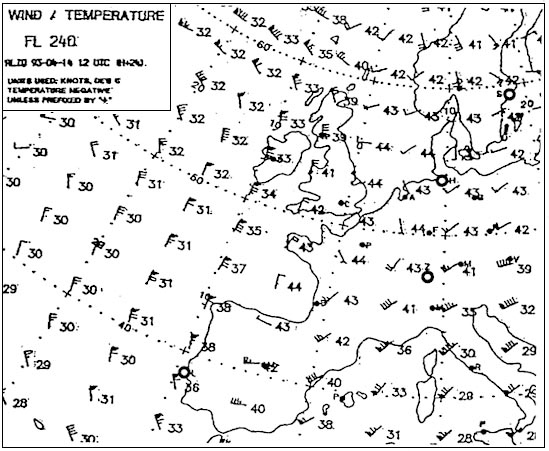 A decrease in range.
A decrease in range. If the centre of gravity of an aeroplane moves forward during flight the ?
Question 65-37 : Heavier making the aeroplane more difficult to manoeuvre in pitch lighter making the aeroplane more difficult to manoeuvre in pitch heavier making the aeroplane more easy to manoeuvre in pitch lighter making the aeroplane more easy to manoeuvre in pitch
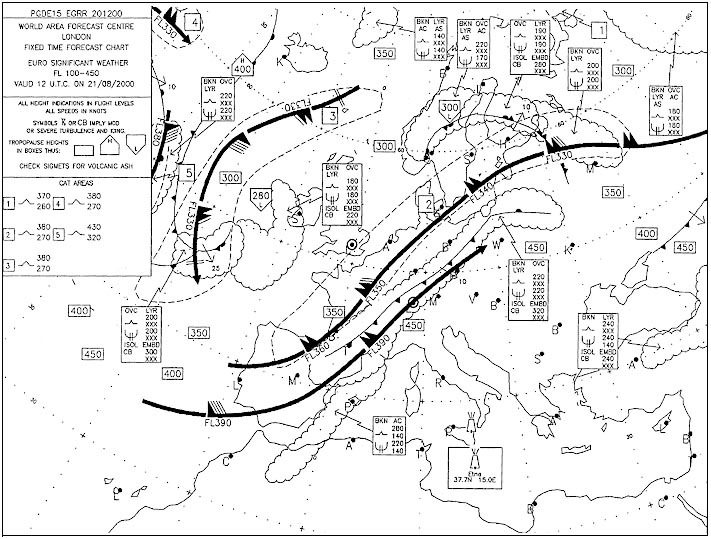 Heavier making the aeroplane more difficult to manoeuvre in pitch.
Heavier making the aeroplane more difficult to manoeuvre in pitch. The determination of the centre of gravity in relation to the mean aerodynamic ?
Question 65-38 : Length of the mean aerodynamic chord and the leading edge length of the mean aerodynamic chord and the trailing edge position of the aerodynamic convergence point position of the aerodynamic centre of pressure
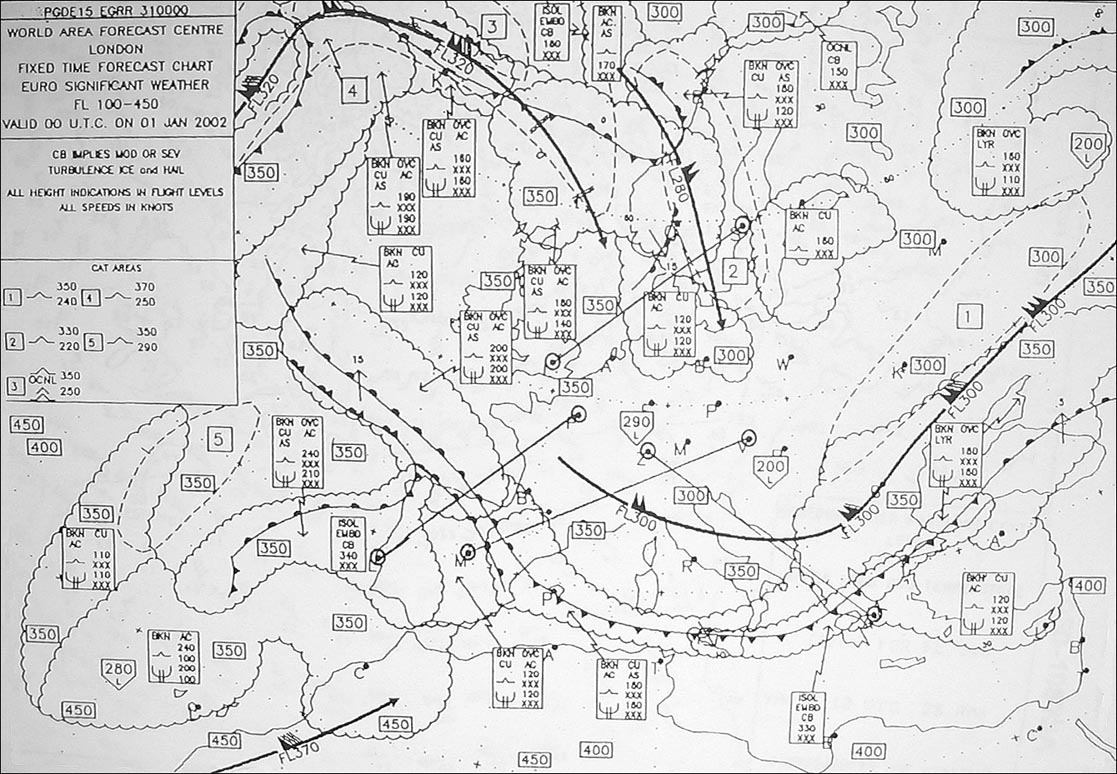 Length of the mean aerodynamic chord and the leading edge.
Length of the mean aerodynamic chord and the leading edge. The maximum zero fuel mass ?
Question 65-39 : Is calculated for a maximum load factor of +2 5 g is calculated for a maximum load factor of +3 5 g can be increased by stiffening the wing imposes fuel dumping from the outer wings tank first
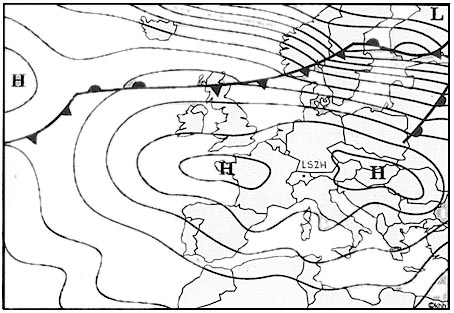 Is calculated for a maximum load factor of +2.5 g.
Is calculated for a maximum load factor of +2.5 g. When has the centre of gravity to be computed ?
Question 65-40 : Prior to every flight at least every four years during every yearly inspection after every 400 hours inspection
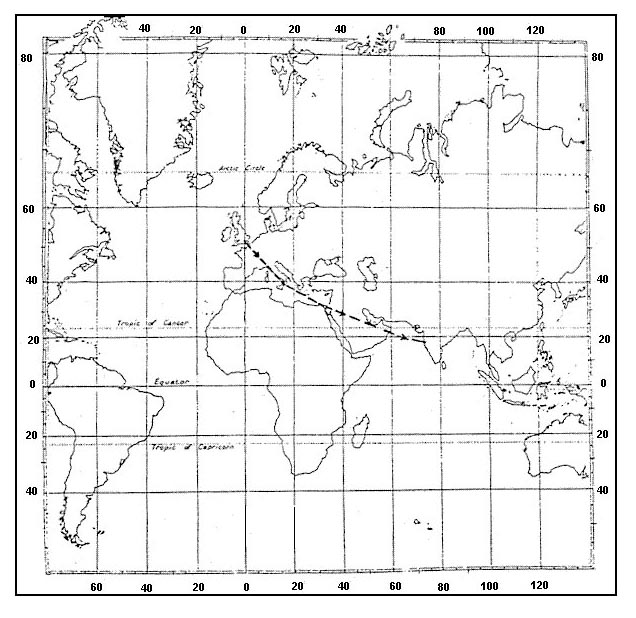 Prior to every flight.
Prior to every flight. ~
Exclusive rights reserved. Reproduction prohibited under penalty of prosecution.
2559 Free Training Exam
